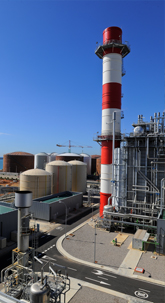Yet the idea of a diversified energy balance has been reinforced, which considers all reasonably viable sources and a wide range of supplies.
The European Union is making efforts to reduce emissions of CO2, specifically, and greenhouse gases, in general. In the last two decades, emissions have dropped by 20%, while the economy in the area has grown by 40%. Through its Energy Roadmap for 2050, the EU has been working on establishing the objective of reducing emissions by between 80% and 95%. This means a major effort in the upcoming decades by all sectors involved (electricity generation, industry, transport, construction, housing and agriculture).
The price of crude oil continued the upward trend in the first part of the year, with noteworthy volatility throughout all 2011. Rises and drops were highly correlated with the tone and perspectives of global economic news, particularly the news coming from Europe, rather than being correlated with objective market situations.
At the end of February, the price of Brent reached $119/barrel, a value not seen since August 2008. At that time, signs from Western economies led to the belief that the crisis was gradually recovering. The political crises in some Arab countries of the Near East buttressed the upward price.
If the average value of crude in 2010 was approximately $80/barrel, in 2011 most of the average monthly values were above $100/barrel, with peaks exceeding $120/barrel in the case of Brent.
The prices of natural gas in the spot market continued to be low in the United States, moving within a range of between $3.3 and $4.5 per million Btu in the market (Henry Hub). The trend since September has been decreasing, due mainly to the weakness of industrial demand and mild weather, together with an increase in the supply side (in the US market).
In the European market, the evolution of the price of natural gas has not been the same. There was an upturn and then the price held, a consequence of the rise in the price of oil and oil derivatives. Most supplies are contracted using formulas that are mainly indexed to the price of crude or petroleum products. For example, some sources point to the fact that 85% of German gas purchases from Russia are indexed to the price of crude oil. The average value of the NBP is slightly above $9/Mbtu, with a range of between $8.8 and $9.27/Mbtu.
In Asia, the growth of the gas price on the spot market has been notable. The accident at the nuclear power plants in Japan and the subsequent closure thereof, plus the dynamics of this area of the world, caused an escalation of the spot price, which was occasionally close to $20/Mbtu. Only at the end of the year did price pressure drop, the consequence of a certain supply surplus globally and an Asian market that wasn’t as firm as expected.
The spot market continues to increase its share in the global market.
The first part of 2011 already recorded trends showing that demand was not going to be firm. For example, the demand for petroleum products dropped around 1% and the demand for natural gas dropped around 9% at mid year. During the period from January to September, the oil demand in OECD countries dropped by 0.9%, and natural gas demand in Europe dropped by 6.6%.
The price of coal grew by 29% in the second half of 2010, following the trend of crude oil prices. In 2011 there was a certain detachment from the price of crude. In September 2011, its price according to the McCloskey Index was $3.4/MT lower than in January (-2.6%). During that same period, the growth in the average price of crude oil was close to 20%.

-
 Gas Natural
Gas Natural

